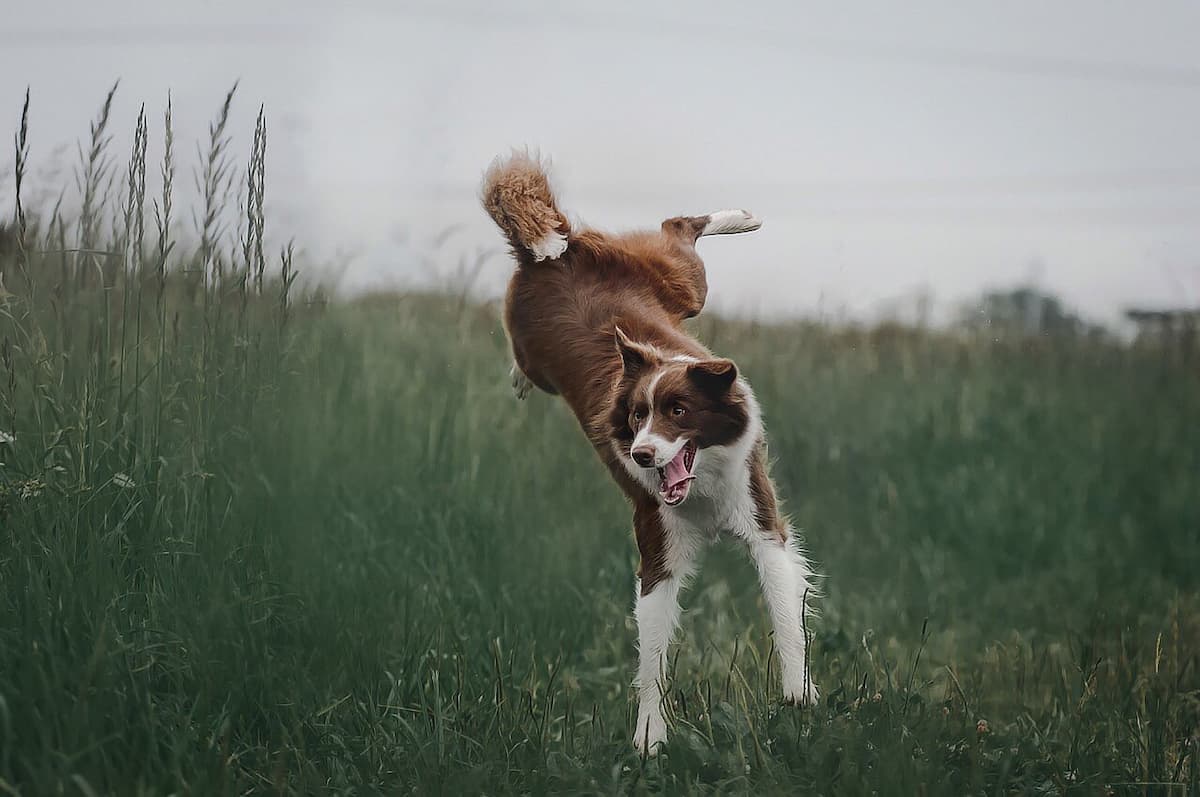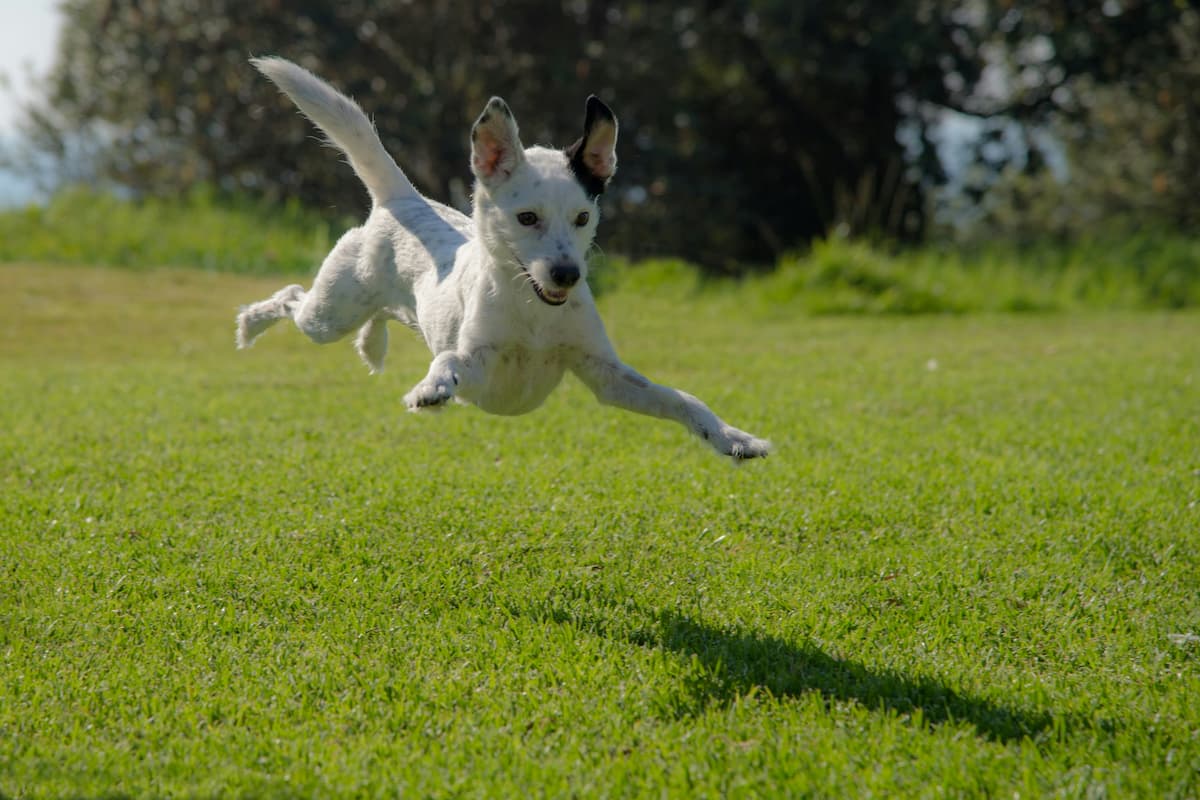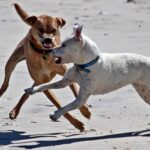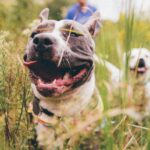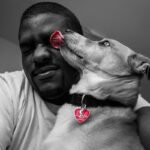Picture this: you walk through the door, exhausted from a long day at work, and there they are, waiting eagerly for your arrival.
Their wagging tail and smiling eyes give you an instant jolt of happiness, as you realize, without a doubt, that you are loved unconditionally.
But then, out of nowhere, your faithful furry friend launches themselves into the air, their paws latching onto your chest, as if they’ve just won a medal in the high jump event.
And you can’t help but wonder, “Why do dogs jump when they see you”?
This article will explain the fascinating reasons for this adorable behavior.
Uncovering the Psychology Behind Your Pooches’ Jumping Behavior
They wag their tails, bark with delight, and in some cases, they jump right into your arms!
Dogs have a unique way of expressing their joy when they see their beloved humans.
And it turns out that there are several reasons behind this adorable behavior.
A way to show affection: When dogs jump, it’s their way of showering us with love and excitement.
Dogs are pack animals by nature, and they see their human family members as part of their pack.
Jumping is their way of greeting you and showing their excitement.
By jumping up, they are trying to get closer to our faces, as a display of affection.
This behavior can be traced back to their wild ancestors, who would jump on other members of their pack to show submission and affection.
It’s like their version of a handshake or a hug.
So, the next time your dog jumps on you, remember that it’s just their way of saying “hello” and expressing their joy at your presence.
Seeking attention: Dogs are smart and social creatures, and they quickly learn that jumping up can get them the attention they crave.
When they see you, they want to get your focus and engage with you, and jumping up is their way of saying, “Hey, look at me!”
Unfortunately, sometimes this attention-seeking behavior can become problematic, especially if your dog is large or excitable.
An outlet for excitement: For some dogs, jumping is simply a way to release their pent-up energy and excitement.
They can’t contain their joy when they see you, and their exuberance leads them to jump up and down.
While this behavior can be endearing, it’s essential to teach them more appropriate ways to express their excitement, such as sitting or offering a paw for a handshake.
Practical Tips to Prevent and Manage Your Dog’s Jumping Behavior
While jumping may seem harmless, it can become a nuisance and even dangerous, especially if you have a large or energetic dog.
Therefore, it is crucial to teach your dog appropriate ways to greet people, so they can still express their excitement without causing any discomfort.
Luckily, there are practical tips to prevent and manage this behavior.
Here are a few strategies you can try:
Consistency is key
Make sure everyone in your household is on the same page when it comes to managing your dog’s jumping behavior.
Consistency in how you respond to jumping will help your furry friend understand what is acceptable and what is not.
If jumping up on you has resulted in receiving attention or treats in the past, your dog is likely to repeat this action to get the same positive outcome.
This unintentional reinforcement can create a cycle where the behavior is reinforced and repeated.
To break this pattern, it is important to consistently reward your dog when they display calm greetings without jumping.
Reward alternative behaviors
Teach your dog an alternative greeting behavior, such as sitting or offering a paw.
Whenever your dog approaches you calmly and avoids jumping, reward them with praise, treats, or a favorite toy. Positive reinforcement helps associate the desired behavior with positive outcomes.
For instance, when your dog approaches you excitedly but remains in a sitting position, promptly give them a treat or a pat on the head. By redirecting their behavior and rewarding alternative actions, such as sitting or offering a paw, you can help your furry friend understand that these actions are more desirable and rewarding.
Ignore and redirect
When your dog jumps on you, avoid giving them attention or physical contact.
Instead, cross your arms, turn your body away, and ignore them. Once they calm down, redirect their attention by asking them to perform a command or engage them in an activity they enjoy, like playing with a toy or walking. Remember, training your dog out of jumping up takes time and patience.
It is essential to establish consistent rules and use positive reinforcement techniques.
By teaching your dog alternatives to jumping up and fostering positive interactions, you can ensure that your dog becomes a well-mannered companion that everyone can enjoy being around.
So, next time your dog jumps up to greet you, redirect their behavior and reward them for making the right choice.
FAQ
Q: So, why exactly do dogs jump when they see us?
A: Well, there are a few reasons behind this adorable display of enthusiasm.
Firstly, jumping is a natural behavior for dogs.
It’s their way of greeting and showing affection, as they try to get closer to your face to receive some well-deserved attention.
Q: Is jumping a behavior exclusive to dogs?
A: Not at all! Dogs share this tendency with their wild relatives, such as wolves.
When wolf packs reunite after some time apart, they engage in joyful jumping as a sign of social bonding and excitement.
Q: What role does body language play in a dog’s jumping behavior?
A: Dogs rely heavily on body language to communicate with us and with other animals. Jumping stems from their desire to establish physical contact and establish a connection with you.
They use their entire body, wagging tails and all, to convey their excitement and reinforce their bond with you.
Q: Can training help curb this behavior?
A: Absolutely! Training is a vital tool in shaping our dogs’ behavior.
By teaching our furry friends the appropriate forms of greeting, such as sitting calmly instead of jumping, we can redirect their enthusiasm.
Consistent training helps our dogs understand the desired behavior when they see us, making their greetings more manageable and enjoyable for everyone involved.
Q: What are some tips to prevent dogs from jumping on guests?
A: Engagement and consistency are key when training your dog to greet guests politely.
One effective technique is to reward your dog for sitting calmly when someone arrives instead of jumping. Encouraging guests also to ignore jumping and reward calm behavior can be helpful. Additionally, teaching a reliable “sit” or “stay” command specifically during greetings can redirect their excitement and encourage better manners.
Q: Are there any benefits to this jumping behavior?
A: Despite the challenges it can sometimes pose, jumping also signifies a dog’s affection towards you.
Their excitement and eagerness to greet you demonstrate the strong bond they share with their human companion.
It’s a lovely testament to the special connection we have with our pets.
Q: Can jumping ever become problematic or dangerous?
A: Indeed, jumping can pose some issues, especially when it comes to young children, elderly individuals, or those with physical limitations.
Even if your dog is friendly and means no harm, they can accidentally knock someone over or cause discomfort.
That’s why it’s important to train them to greet people politely, ensuring the safety and comfort of everyone.
Q: Is it possible to redirect a dog’s overflowing excitement without entirely eliminating jumping?
A: Absolutely! While it’s important to train dogs not to jump on people, there are alternative ways for them to express their happiness.
Encouraging them to fetch a toy, offering treats, or engaging in a quick play session can channel their energy in a positive direction without sacrificing their excitement.
Q: What’s the bottom line about dog jumping behaviors?
A: Understanding why dogs jump when they see us helps us navigate this natural and endearing behavior more effectively. With proper training and consistent reinforcement, we can guide our dogs to greet us and our guests politely while preserving the joyful connection that dogs bring to our lives.
Closing Remarks
And there you have it, the fascinating and often heartwarming reasons behind why our beloved furry friends just can’t contain their excitement and jump for joy whenever they see us.
From their innate pack mentality to their overflowing affection, it’s clear that dogs have their own special language of expressing love and happiness.
So, the next time your pup takes flight upon seeing you, remember that it’s not just a simple leap, but a celebration of the incredible bond you share.
Embrace those airborne greetings, cherish the wagging tails, and revel in the unconditional love that comes with being a dog’s best friend.
After all, few things in life can compare to the sheer delight and unbridled joy of a dog’s jump into your arms.


